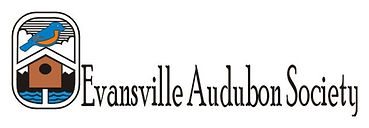Conservation
Bird Counts
A primary activity of any local Audubon chapter is participation in bird counts. Bird counts have become an important citizen science endeavor that provides information on bird populations in terms of abundance and distribution. The counts made by Audubon chapters, in addition to all other citizens, provide a huge amount of data that can be analyzed by scientists associated with organizations such as the National Audubon Society and the Cornell Laboratory of Ornithology.
Scientists use the data collected in bird counts to determine how birds are affected by habitat loss, pollution, and disease. They trace bird migration and document long-term changes in bird abundance. Results are used to create management guidelines, investigate impacts of climate change, and advocate for the protection of declining species.
The counts EAS members typically participate in include: Great Backyard Bird Count, May Count, Christmas Bird Count, and Project Feederwatch.
Annual Conservation Grants
All donations received by EAS go toward education programs and conservation projects. Each year the EAS board reviews grant applications from other non-profit organizations and individuals and selects recipients that best reflect our mission. Given below is an example of a conservation grant supported by EAS.
Barn Owl Nest Boxes: With a grant from EAS, personnel at the Patoka River National Wildlife Refuge, in co-operation with the Sycamore Land Trust, erected two barn owl nest boxes on the Columbia Mine Grassland, which is part of the refuge. Barn owls have shown population declines throughout their range and it is believed that erecting nest boxes in suitable habitat would greatly benefit the owl population. Recent work on placing nest boxes in Illinois have proven successful.
Update, Summer 2018: On June 21, 2018, Talon Trust's Lauren Norvell brought two young Barn Owls to the Patoka Refuge for a hacking release in one of the Barn Owl nest boxes at Columbia Mine Grassland. The two had been rescued from a barn in southern Indiana when the adult on the nest was found dead. The two young birds did not stay long and soon left the nest box.
Conservation Projects
The National Audubon Society, through their Collaborative Grant Program, has awarded EAS with funding for conservation projects in recent years. Examples of two such projects are outlined below.
Chimney Swift Towers: A recent death by West Nile Virus in our own community in southern Indiana prompted a member of the EAS to propose a project to help control mosquitoes in a more natural and environmentally friendly way by erecting chimney swift towers at key locations in and around Evansville, Indiana. Chimney swifts eat about 1/3 of their own body weight in mosquitoes, biting flies and termites each day which makes them a very efficient method of removing problem insects. Unfortunately, the swift populations are declining. Historically swifts used large hollow trees for nesting and roosting, but as forests were removed and their habitats were lost, they adapted to use man-made structures. But the practice of covering chimneys further aided in the swift's decline. To counter the loss of habitat and minimize the threat of West Nile virus we have erected four chimney swift towers in the Evansville area to encourage the growth of the swift population.
American Kestrel Project: The EAS American Kestrel Project is designed to bring awareness to the declining American kestrel and allow project participants to become involved in improving the bird's habitat. In the fall of 2014 and spring 2015, our Jr. Birders partnered with environmental science majors from the University of Evansville to construct kestrel nest boxes, place the nest boxes in locations throughout the Bluegrass Fish and Wildlife, and monitor the use and success of the nest boxes in the summer. The Jr Birder/UE student teams were mentored by raptor experts from the Talon Trust. Furthermore, this project is part of the American Kestrel Partnership, an organization collecting citizen science data throughout North America. Unfortunately no kestrels have used the nest boxes. However, the tree swallows love the boxes and all boxes have been used successfully. While no kestrels have nested, the use by tree swallows is encouraging as this species is also experiencing population declines in recent years.
Update, Spring 2018: Routine nest box monitoring during the spring of 2018 revealed a kestrel nest of 5 eggs in one of the nest boxes at the Bluegrass FWA. All five eggs hatched successfully and later all five birds fledged from the box; four females and one male. All other boxes were occupied by tree swallows as in previous years. Check out the gallery below for added pictures of eggs, 7-8 day old hatchlings, and young about two days before leaving the box.





